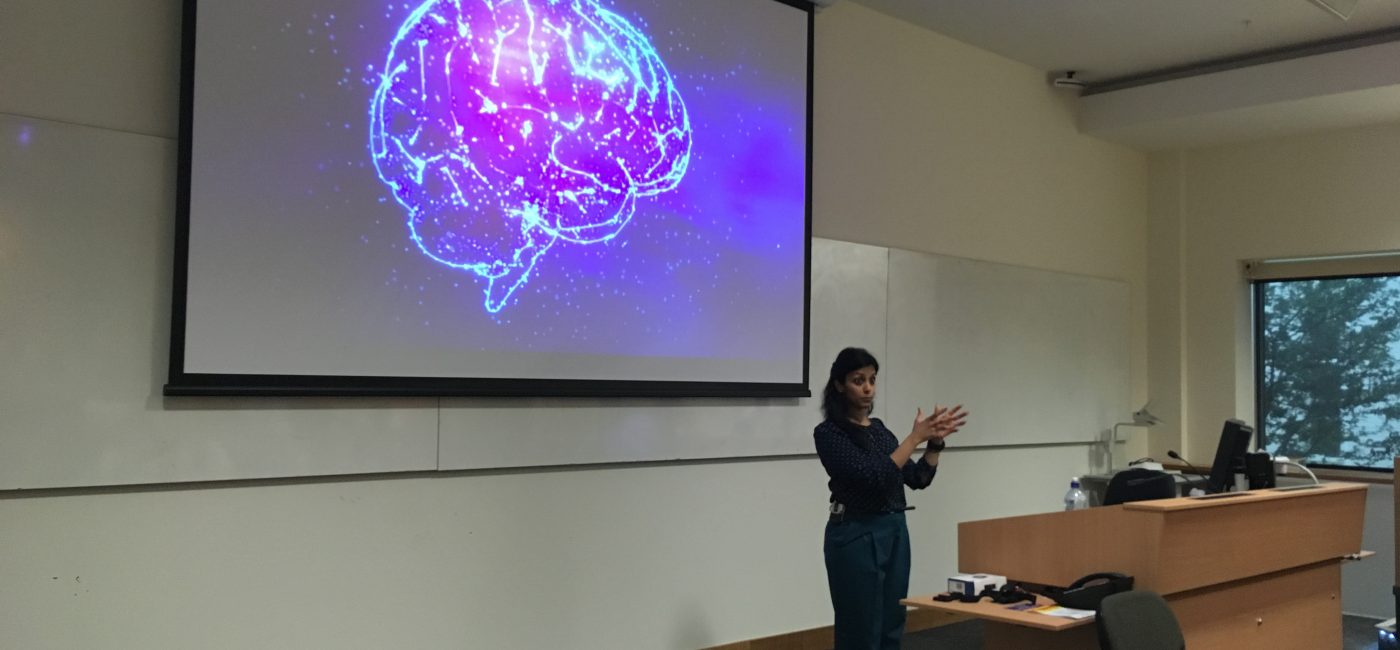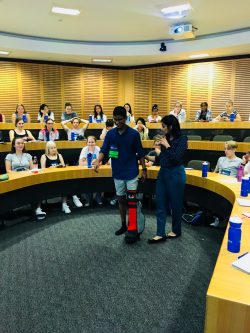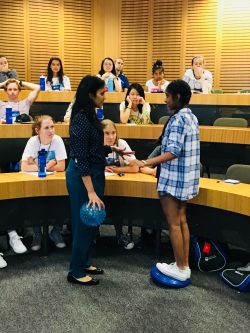
“especially captivating…one of my favourite parts of NYSF” – Sam, Armidale
The human brain is like JARVIS - according to academic and physiotherapist, Dr Niru Mahendran. The brain is an incredibly complex network, the brain that analyses and interprets our environment, provides our voice of reason, controls movement, and stores and transmits information, much like JARVIS does for Tony Stark/Iron Man. Despite the complexity and enigma surrounding the human brain, Dr Mahendran taught NYSF 2018 Session C students how we can manipulate it.
Did you know that an Australian has a stroke every 10 minutes?
Neurons in the brain require a large supply of oxygen and therefore the brain has an extensive vascular system. Any interruption to the brain’s blood supply causes the surrounding tissue to be damaged due to a lack of oxygen, leading to stroke. There are two types of stroke:
Ischemic stroke - an obstruction (e.g. blood clot) blocks the blood flow to a part of the brain
Haemorrhagic stroke – weaken blood vessel walls rupture and causes bleeding in the brain
Dr Mahendran explained that damage to tissue is spontaneous and symptoms develop rapidly, and urged students to act FAST if they ever see the symptoms:
- Has their FACE drooped?
- Can they lift both ARMS?
- Is their SPEECH slurred?
- Call 000, as TIME is critical
Did you know that only 40% of Australians meet the national physical activity guidelines?
Physical activity is beneficial for our health in many ways:
- Decreases plaque build up in the blood (less chance of forming blood clots)
- Decreases levels of blood sugar concentration
- Decreases levels of blood pressure
- Boosts the ability of the brain to recover and regenerate
- Decreases weight
- Improves sleep
Dr Mahendran emphasised the important of physical activity to both prevent stroke as well as to improve post-stroke recovery. Even if patients are unable to physically move, the visualisation of moving or someone manually moving their limbs can help rewire the brain to re-learn how to perform seemingly simple actions such as walking. Dr Mahendra shared her research in determining what hospitals and rehabilitation centres can do to improve outcomes of stroke survivors, and how they can manipulate brain reorganisation to help recovery.
She did this by modelling stroke survivor mobility and balance therapeutic exercises: NYSF student, Sam (Armidale, NSW), was dressed in an ankle and knee brace so that he couldn’t move his left leg below the hip and was asked to walk around the room. It was clear that it was incredibly difficult for him to do so, and therefore it is a physiotherapist’s role to determine suitable exercises. Instead, patients can perform balance exercises, as demonstrated by NYSF student, Sam (Singapore), who stood on a wobble balance board while the two Sams threw a ball to each other.


But what if a patient is wheelchair-bound? Dr Mahendran made it clear that there were plenty of exercises for people who can stand up. No one was spared from the exercise class, as she asked all students to join her in a workout routine and taught them how to calculate their heart rate afterwards. While the workout only lasted 2 minutes, Australian Department of Health guidelines recommend 30 minutes of moderate-intensity activity such as this per day. But what if a patient is wheelchair-bound? She also showed that there are specialised treadmills designed to support a person’s weight to allow them to walk when they are normally wheelchair-bound.
Watch video of the ball throwing activity.
Watch video of the seated exercise activity.
Did you know that it takes 10,000 repetitions of an action before structural changes are observed in the brain?
Brain reorganisation is chemical (production of neurotransmitters to send signals from one neutron to another), physical (practicing activities lays down more neurons in the brain and builds networks as particular sections keep activating), and functional (electrical activity and blood flow to particular areas are boosted). Therefore we can manipulate the brain in recovery with:
- Practice, practice, practice
- Matching patients with appropriate interventions
- Priming the brain with a burst of intense physical activity, such as the workout routine that students performed, to release chemicals in the brain such as BDNF, which is important for neurogenesis
Dr Mahendran told the showed students that results from her recent studies that show that increasing physical activity and mental stimulation (socialisation, games, and hobbies - the most popular at Canberra Hospital being Wii sports) significantly improves long-term recovery in stroke survivors. Therefore, while stroke survivors perform less exercise than the most sedentary adults on average, she wants to advocatemake a push to change this. Devices that track physical activity, such as Fitbits, and discussion with physiotherapists to target barriers to being active can result in behavioural changes that are greatly beneficial.
Students took away many lessons from this special lecture. There were certainly more students and staff being involved in morning exercises in the following days – so if anything, Dr Mahendran had succeeded in inspiring NYSF students to be more active.
She also parted with words of advice:
- “Don’t be afraid to be curious and ask questions”
- “We have to experience life and see what the problems are … have a think about what it is that you want to change”
- “Remember that you don’t have to follow the herd”
If we want to see a change in Australian health, we have to work together because nothing can be solved alone, and we look to NYSF students and alumni, the scientists and health professionals of the future, to play a part.
Catriona Nguyen-Robertson, Communications Intern and NYSF Alumna 2011.